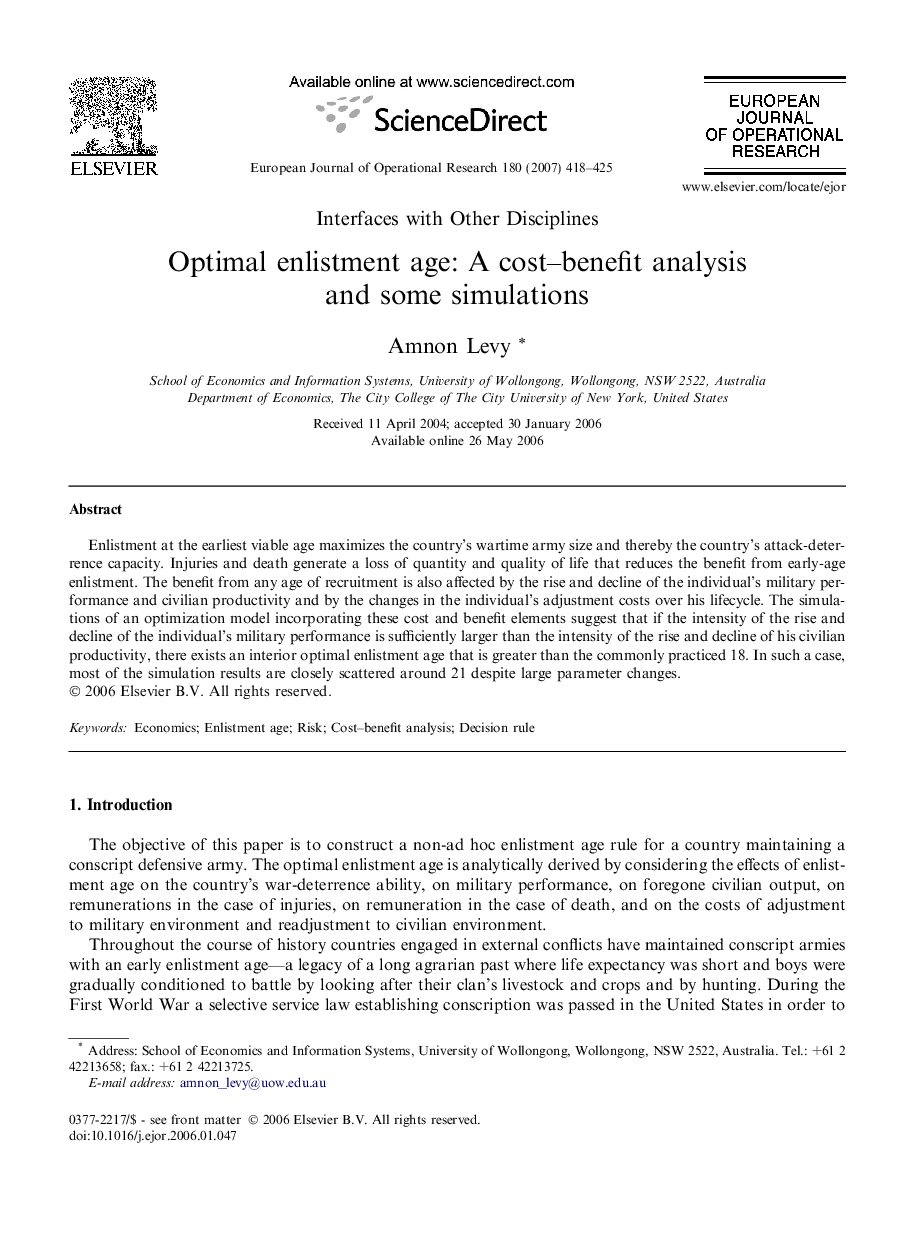| Article ID | Journal | Published Year | Pages | File Type |
|---|---|---|---|---|
| 477807 | European Journal of Operational Research | 2007 | 8 Pages |
Enlistment at the earliest viable age maximizes the country’s wartime army size and thereby the country’s attack-deterrence capacity. Injuries and death generate a loss of quantity and quality of life that reduces the benefit from early-age enlistment. The benefit from any age of recruitment is also affected by the rise and decline of the individual’s military performance and civilian productivity and by the changes in the individual’s adjustment costs over his lifecycle. The simulations of an optimization model incorporating these cost and benefit elements suggest that if the intensity of the rise and decline of the individual’s military performance is sufficiently larger than the intensity of the rise and decline of his civilian productivity, there exists an interior optimal enlistment age that is greater than the commonly practiced 18. In such a case, most of the simulation results are closely scattered around 21 despite large parameter changes.
